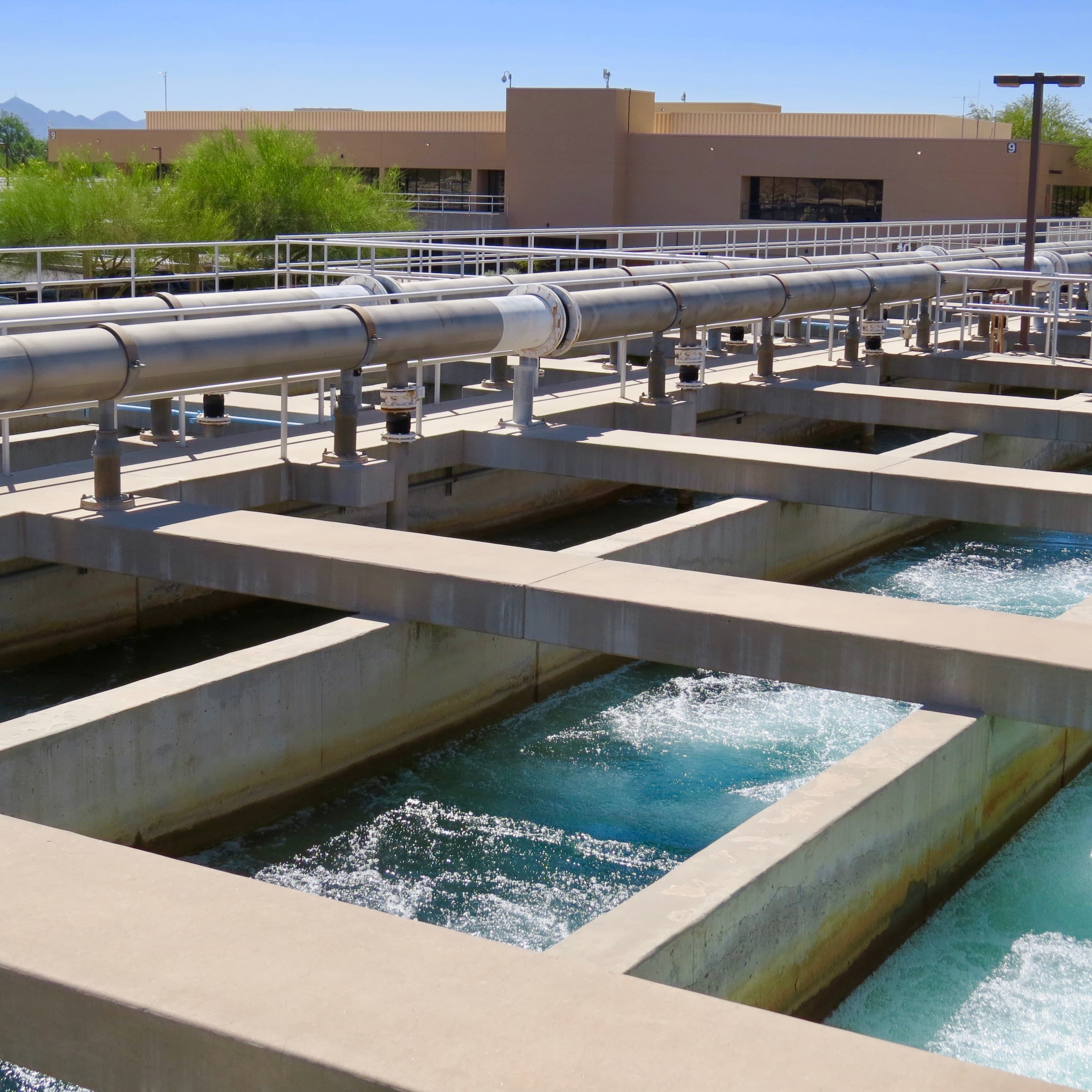AMWUA Blog
BY: Warren TenneyInfrastructure: What You Pay For When You Pay Your Water Bill

Cities keep water flowing into your home and business and whisk away wastewater 24 hours a day – every day. This daily convenience that you and your family take for granted requires cities to relentlessly build, repair, maintain and expand acres of treatment plants and miles of pipes and pumps. Cities employ and train professionals to safeguard these complex systems by monitoring them daily using computer programs and manual checks. Employees sample and test the drinking water in laboratories and in the field, clean pipes and pumps, check for leaks, repair and maintain equipment under streets and at water and wastewater treatment plants. It is an expensive operation that manages to provide drinking water to you at about ¼ of a cent per gallon along with a fee to remove, treat and re-use wastewater.
Even small repairs are important and expensive. This year the City of Glendale finished a small project to improve the odor control system at its West Area Water Reclamation Facility. It replaced a badly corroded chemical scrubbing system constructed in 2000 and replaced it with a more efficient, sustainable and cost effective biological filter system. The project wrapped up in March and took 14 months to complete. It cost $2.5 million to construct with an additional $307,380 for engineering design and construction administration. Now, consider this: Glendale has 20 projects in the construction phase right now and another 11 projects in the design stage. The city, with a population of about 240,000, operates four water treatment plants with 1,040 miles of drinking water distribution lines and two wastewater treatment plants with 703 miles of wastewater collection lines. Glendale also maintains 8,400 fire hydrants and 62,600 water meters.
Cities continually assess their water and wastewater infrastructure balancing the likelihood of failure in aging parts and the consequences of such failures. City water departments use the information to create repair, replacement and expansion construction schedules and minimize unplanned line breaks, but with miles of water and wastewater lines the unexpected still happens in every city. On the morning of February 7th, 2018, a 36-inch water pipe within City of Chandler's drinking water distribution system burst, immediately flooding Price Road and 101 and 202 interchange ramps. To shut the water off and reduce the damage, Chandler’s water staff had to close 21 water valves. The city spent nearly a million dollars to repair the break in the pipe, access the condition of the surrounding pipes, and install new equipment to ensure the pipe could be shut down more quickly and alleviate the damage of another potential break. This was one break in Chandler’s 3,176 miles of drinking water distribution lines from two water treatment plants and 30 wells. Chandler also maintains three wastewater treatment plants, 871 miles of wastewater collection lines, 12,318 fire hydrants and 80,000 water meters.
AMWUA cities routinely build partnerships to share the cost of building and expanding water and wastewater treatment plants and share underground storage and recharge facilities that replenish aquifers. One of the Phoenix Metropolitan area’s oldest joint water projects is the 91st Avenue Wastewater Treatment Plant built in 1957 and expanded several times. It is operated by Phoenix but owned and used by AMWUA’s five original member cities: Glendale, Mesa, Phoenix, Scottsdale and Tempe. Most of the treated wastewater this plant produces is shipped through a pipe to cool the Palo Verde Nuclear Generating Station 36 miles west of the plant.
Since then, joint water and wastewater plants have been built all over the Valley to expand capacity, reduce costs and add redundancy. Cities continue to partner in projects and build redundancy into their water supplies and systems to ensure water flows to residents and businesses despite shortages, infrastructure failures or large fires.
More recently, cities have been collaborating to make sure they can efficiently bolster their water supplies during times of shortage. The most recent examples are two agreements signed by the Cities of Avondale and Phoenix. This partnership will provide water storage space for Phoenix and water that can be easily treated and delivered at a lower cost during times of shortages. Avondale will connect to the southwest end of one of Phoenix’s main water distribution lines, saving Avondale the expense of building infrastructure it would need to receive its share of Colorado River water from the Central Arizona Project canal. This agreement also reduces the amount of groundwater Avondale needs to pump from its aquifer.
If you’re interested in the size of your city’s water infrastructure, we have the numbers on the Our Members page at the AMWUA website. Maintaining these aging and expansive water distribution and collections systems is a constant and growing expense for your city. It is why your city’s water department sometimes asks city council members to increase water and wastewater rates and what you pay for each time you pay your water bill.
Photo: City of Phoenix/Union Hills Water Treatment Plant
For 49 years, Arizona Municipal Water Users Association has worked to protect our member cities’ ability to provide assured, safe and sustainable water supplies to their communities. For more water information visit amwua.org .
